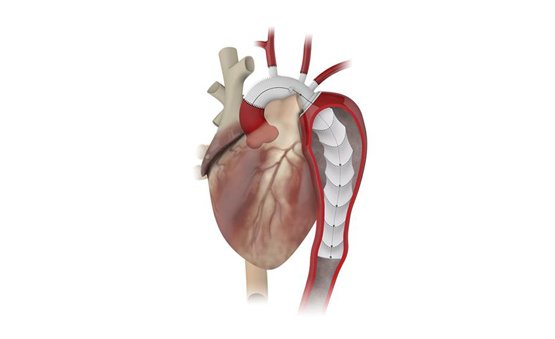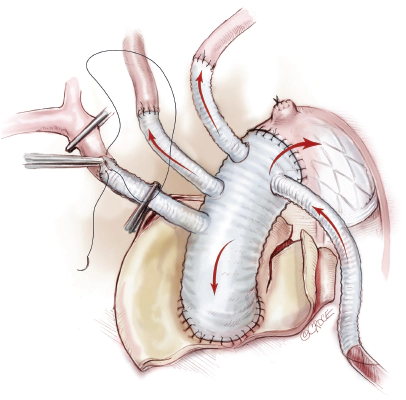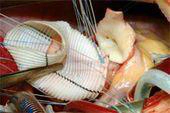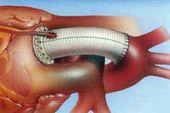Thoracic aortic surgery

Treatment spectrum - Aortic surgery
- Aortic conduit bearing valve with coronary implantation (biological and mechanical valve prostheses)
- David’s ascending aortic valve replacement with aortic valve preservation
- Insertion of a ‘proboscis’ prosthesis in the descending aorta (elephant trunk)
- Total and partial replacement of the descending aorta
- Change of conduit after aneurysm surgery
- Partial and total aortic arch replacement
- Replacement of ascending, descending aorta, and aortic arch with hybrid prosthesis

As a rule, thoracic aortic surgery requires a cardiopulmonary bypass machine and, if necessary, complete cardiac arrest. Further improvement of established techniques, e.g., reducing the likelihood of hemiplegia after thoracic aortic replacement, brain-protective measures in cardiac arrest through orthotopic perfusion of the brain, neurological monitoring with a monitor to reduce cerebral side effects, as well as reducing the duration of postoperative hospitalization in the clinic, are targeted goals, some of which have already been achieved.
Aortic root surgery is an important treatment. In addition to performing all established techniques of aortic root replacement, including the D. Ross procedure, reconstructive techniques with preservation of a natural aortic valve of the body itself (T. David procedure) have been exceptionally well established. Because of the possibility of future avoidance of Marcumar administration, this method is used mainly in patients with Marfan syndrome but increasingly in patients with acute ascending aortic dissection. The procedures mentioned are particularly suitable for young patients wishing to procreate.

The development of new surgical techniques improves surgical outcomes to improve the patient’s postoperative quality of life. New implants (so-called hybrid prostheses), in which a thoracic aortic bypass is connected to the conventional vascular prosthesis, replace the ascending aorta, the aortic arch, and the descending aorta. In this way, additional surgery can be avoided in many patients.
The hybrid prosthesis consists of an associated stent segment and a conventional tissue prosthesis segment. In the case of an aneurysm affecting both the aortic arch and the descending aorta, the descending aorta is replaced with the stent and the aortic arch (and, if necessary, the ascending aorta) with the tissue prosthesis part. In the tissue prosthesis part, the vessels that supply blood to the brain and the upper limbs are reimplanted as so-called tissue islands. During the operation, which must be performed with a cardiopulmonary bypass machine, blood and oxygen are administered to the brain through separate catheters (shown in red).
